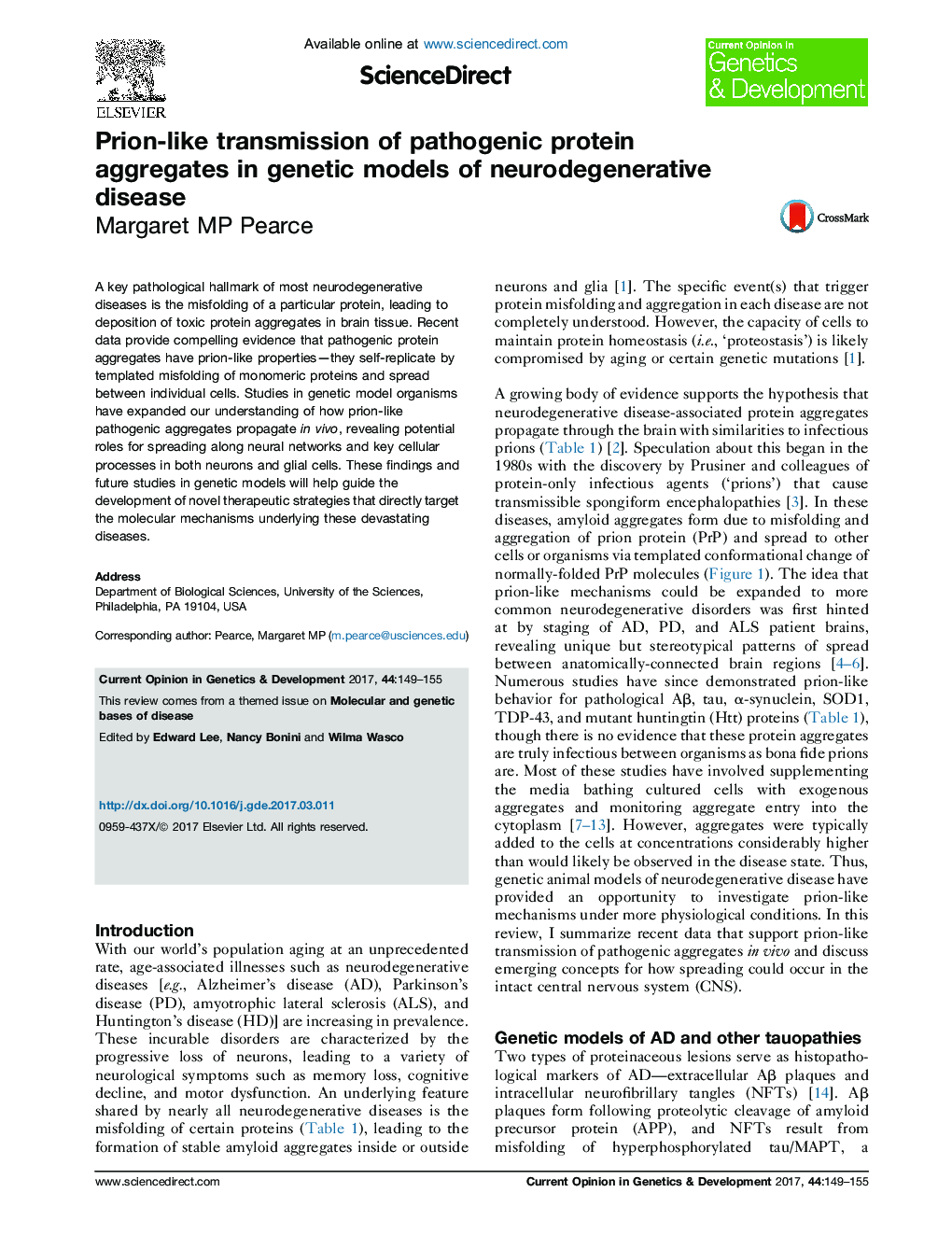| Article ID | Journal | Published Year | Pages | File Type |
|---|---|---|---|---|
| 5585649 | Current Opinion in Genetics & Development | 2017 | 7 Pages |
Abstract
A key pathological hallmark of most neurodegenerative diseases is the misfolding of a particular protein, leading to deposition of toxic protein aggregates in brain tissue. Recent data provide compelling evidence that pathogenic protein aggregates have prion-like properties-they self-replicate by templated misfolding of monomeric proteins and spread between individual cells. Studies in genetic model organisms have expanded our understanding of how prion-like pathogenic aggregates propagate in vivo, revealing potential roles for spreading along neural networks and key cellular processes in both neurons and glial cells. These findings and future studies in genetic models will help guide the development of novel therapeutic strategies that directly target the molecular mechanisms underlying these devastating diseases.
Related Topics
Life Sciences
Biochemistry, Genetics and Molecular Biology
Developmental Biology
Authors
Margaret MP Pearce,
